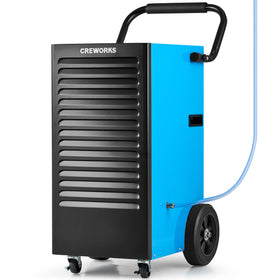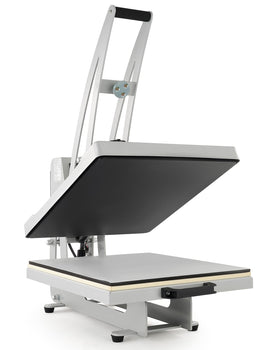Cleaning watch parts in an ultrasonic cleaner sounds a little intimidating to many people, but as long as you use the right ultrasonic cleaning solution and refrain from putting vulnerable components into the ultrasonic cleaner, it is not only possible but also safe and effective.
Also, using an ultrasonic cleaner for watch parts will save you hours of manual work while reaching areas that are nearly impossible to clean by hand.
Why Ultrasonic Cleaning Works for Watch Parts
Cleaning watch parts in an ultrasonic cleaner is actually one of the best ways to get your timepieces sparkling and fully functional.
The ultrasonic cleaner’s vibrations reach every nook and cranny of your watch parts, lifting away old lubricants, dirt, and corrosion that brushes or cloths simply can’t. It’s fast, precise, and far less likely to damage delicate parts, especially when you use it correctly.
What Is the Best Liquid For Cleaning Watch Parts in an Ultrasonic Cleaner?
Three main ultrasonic cleaning solutions work when it comes to cleaning watch parts in an ultrasonic cleaner: solvent-based cleaners, IPA, and (in some cases) water-based detergents like mild ammonia.
-
Solvent-based cleaners like naphtha or mineral spirits. These are ideal for removing oils, old lubricants, and oxidation from metal parts.
-
(Isopropyl alcohol (IPA)): It evaporates quickly and removes leftover solvent, leaving parts completely dry.
-
Water-based detergents (with caution): Mild ammonia solutions can clean heavily corroded parts, but too strong a concentration can damage plated or finished surfaces.
-
Distilled water rinse: Always finish with distilled water to remove any remaining residues from previous baths.
Using a combination of these solutions ensures thorough cleaning without compromising the integrity of your watch components.
How to Clean Watch Parts in Ultrasonic Cleaner: Step-by-Step Process
-
Disassemble the movement: Separate plates, bridges, wheels, screws, and other components. Proper disassembly ensures each part is thoroughly cleaned.
-
Prepare the ultrasonic bath: Fill the machine with plain water and place the cleaning solution in small sealed jars or containers within the tank. This reduces the risk of igniting flammable solvents.
-
First cleaning cycle: Immerse parts in the primary solvent and run the ultrasonic for a brief cycle. Keep cycles short to protect delicate finishes.
-
Rinse cycle: Transfer parts to isopropyl alcohol for another ultrasonic run. This removes solvent residues and promotes rapid drying.
-
Water rinse: Use distilled water to remove any leftover cleaning solution or detergent.
-
Final alcohol rinse and drying: A final IPA rinse ensures parts are fully dry and ready for reassembly.
-
Reassemble and lubricate: Only once parts are completely clean and dry should you reassemble and apply proper lubrication.
Tips and Caveats for Cleaning Watch Parts in an Ultrasonic Cleaner
Ultrasonic cleaning is highly effective, but there are some important precautions:
-
Avoid putting delicate watch parts In: Hairsprings, balance assemblies, pallet forks, and impulse jewels are fragile. Isolate them or avoid ultrasonic cleaning entirely.
-
Keep the cleaning cycles short: Long exposure can damage plated surfaces, matte finishes, or small jewels.
-
Separate the parts: Use small baskets or jars to prevent components from banging into each other.
-
Ensure proper ventilation and safety: Flammable solvents produce vapors that could ignite. Always use containers inside the water bath.
-
Do some manual prep (when needed): Stubborn dried lubricants or corrosion may require light manual cleaning first.
-
Maintain solutions: Replace cleaning and rinse solutions regularly to avoid contamination. Contaminated fluids reduce cleaning effectiveness and can damage parts.
Choosing the Best Ultrasonic Cleaner for Watch Cleaning
Ultrasonic cleaner size and quality matter when selecting an ultrasonic cleaner for watch parts:
-
Small bench-top units: Smaller-sized digital ultrasonic cleaners, like this 180W 6L ultrasonic cleaner, are perfect for controlling cleaning and minimizing solvent use.
-
Adjustable frequency and timer: Go for a digital ultrasonic cleaner if you are not very experienced. It helps protect delicate components while ensuring thorough cleaning.
-
Ensure it has a stainless steel tank: This makes it durable and easy to clean, and greatly simplifies maintenance.
With the right ultrasonic cleaner, correct solutions, and careful technique, you can achieve professional-level cleaning at home. Not only will your watch parts look pristine, but proper cleaning also helps prolong the life and performance of your timepieces.
Final Thoughts on Ultrasonic Cleaner for Watch Parts
An ultrasonic cleaner is an excellent tool for anyone serious about watch maintenance. By following these steps and using the right solutions, you can clean even the smallest components safely and efficiently.
With a high-quality machine, attention to detail, and a little care, your watches will stay in top shape for years to come.
Explore some tips on how to clean old coins in an ultrasonic cleaner without damaging them.
My name is Michael Anderson, and I am a senior engineer specializing in heavy machinery and equipment. I hold a degree in mechanical engineering and have extensive experience in mining and construction industries worldwide. My aim is to simplify complex technical concepts, making them accessible and understandable to a wide audience.















Leave a comment